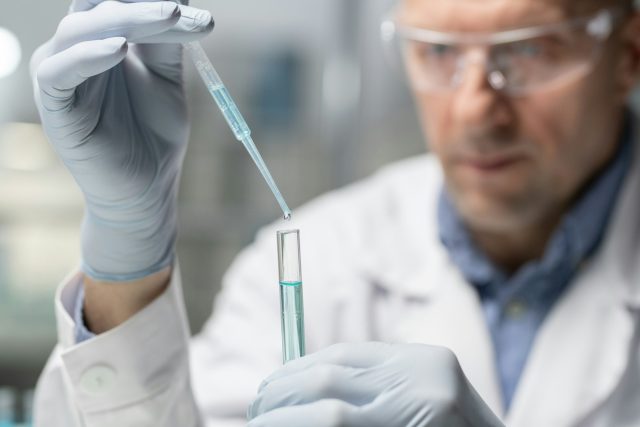
The Medicines and Healthcare Products Regulatory Agency (MHRA) oversees the safety of medicines, medical devices, and blood products in the UK. In highly regulated labs and manufacturing facilities, companies such as Suncombe play a huge role in ensuring the necessary cleaning and sterilisation standards are met.
The 2 key regulations in this field are Good Manufacturing Practices (GMP) and Good Laboratory Practices (GLP). These set the rules for maintaining consistent quality in testing and production across the UK, the US, and the rest of the world.
Although GLP and GMP cleaning standards may appear similar, these compliances have differences. Labs and manufacturing units must be aware of these to avoid complications and ensure quality assurance.
This guide explores the key differences between GMP, GLP, lab washers and sterilisers.
What Is GMP?
Also known as current good manufacturing practices (cGMP), GMP directly influences product quality in pharmaceutical drug production. This standard covers all elements involved in manufacturing, including the raw materials used, the design of the facility, the maintenance of equipment, final testing, quality control and product assurance.
Overall, GMP ensures the quality, safety and efficacy of pharmaceutical products during the production processes.
What Are GMP Sterilisers?
GMP sterilisers or autoclaves are specialised equipment used in the testing and manufacturing of human-use drugs or the end sterilisation of drug products. These sterilisers are compliant with stringent GMP regulations, covering everything from approved construction materials to the purity of water injected for the sterilisation process.
Before sterilisation, facilities often use professional-grade disinfectants like DDAC to clean equipment and surfaces. Combined with GMP cleaning standards, this two-step process can help maintain equipment and prevent contamination, ensuring the quality and safety of both the manufacturing process and the final products.
Benefits of Using GMP Sterilisers
Using sterilisers and lab washers following GMP cleaning standards has multiple benefits.
Quality Control & Monitoring
Following GMP standards, GMP sterilisers use high-purity water > 1 Megaohm, with the quality of steam monitored for dryness, superheat and impurities.
The piping used is medical-grade stainless steel, clamped and orbital-welded. The sterilisation control system is compliant with CFR 21 standards for data security.
Cost-Saving
GMP-compliant lab washers and sterilisers enhance the efficiency of quality control processes and reduce the chance of penalties due to non-compliance. This can reduce the overall cost of operations.
Earn Customer Trust
When you use GMP-certified sterilisers for your processes, your customers will feel more trust and satisfaction regarding product safety.
Improved Production Safety
GMP lab sterilisers are often fully validated to follow the methods and conditions specified in the GMP guidelines, significantly reducing the risk of low product safety and quality. The washers should be built to comply with sanitary standards, including ASME BPE, GAMP, ISPE and 21CFR11.
Gain a Competitive Edge
Using GMP-compliant equipment for washing and sanitising increases production efficiency, reduces manufacturing errors, and improves product quality, boosting your organisation’s reputation. This can include everything from specialised lab washers to warehouse scrubbers that keep large storage and production areas clean and contamination-free.
What Is GLP?
The World Health Organisation (WHO) defines good laboratory practices (GLP) as a quality system for planning, performing, monitoring, recording, archiving and reporting organisational processes for non-clinical health and safety.
GLP is applied during the research and development phase of drug production. Laboratories performing preclinical, stability, and pharmacokinetic studies and research follow GLP to ensure their data is reliable and meets the necessary regulatory requirements.
GLP installations, such as sterilisers and lab washers, adhere to some of the same GMP regulatory requirements as GMP lab washers. However, they’re a relatively low-cost alternative, requiring replacement only when labs need to upgrade their production or clinical trial process.
Benefits of GLP Sterilisers
GLP sterilisers fall into the category of non-GMP sterilisers and have their own benefits.
Improved Lab Reputation
GLP-compliant sterilisers in labs and manufacturing facilities enhance the quality of your products. GLP certification indicates your organisation’s credibility and improves your lab’s reputation in the market.
Reduced Time to Market
When you have a GLP steriliser in your lab or manufacturing facility, you reduce the need to re-work or invest more time in unfruitful investigations. This speeds up the launch of products for sale in the market.
Quick and Accurate Results
GLP sterilisers follow principles that help labs reduce errors, confusion, or mistakes during experiments during the first attempt. This reduces the need to redo experiments.
What Are Lab Sterilisers?
Laboratory sterilisers are non-GMP units typically used in universities, research centres, and facilities focused on biotechnology, animal and life sciences, food, and industrial studies.
They are suitable for applications that don’t require GMP compliance, such as research and animal testing, red bag waste, and packaging, but not for human-use products.
Before purchasing a lab steriliser, you need to conduct a thorough analysis of its application in non-GMP functions.
Final Thoughts
Understanding the difference between GMP, GLP, and general laboratory sterilisers is essential for ensuring compliance, maintaining high-quality standards, and optimising operational efficiency.
Each of them serves a specific role in the lifecycle of pharmaceutical and laboratory processes, and choosing the right type can have a direct impact on safety, productivity, and regulatory success.
By aligning equipment selection with your facility’s unique requirements, you can minimise risks and avoid costly rework, creating a stronger foundation for consistent, reliable output.




